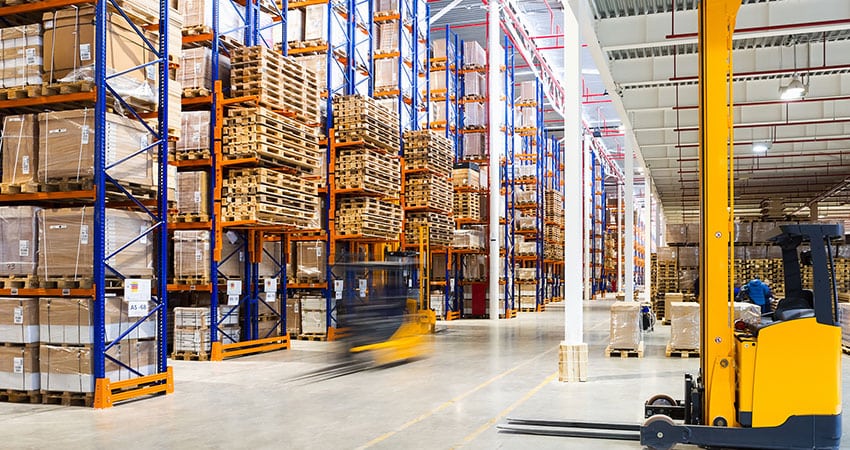Two new reports highlight how demand has bounced back in a big way for commercial warehouse space, especially for ecommerce fulfillment centers as online sales continue to mushroom, after transactions fell off during the initial COVID-19 lockdown phase in March and April.
Retailers that had been mostly focused on store sales found themselves scrambling to acquire or lease new space in the past few months as they pivoted as fast as possible to ecommerce fulfillment, driving the flurry of activity and better numbers. It’s also a function of resetting supply chains, as retailers push inventory closer to customers in population centers to deliver faster at lower cost.
Commercial real estate firm CBRE reports that new leases, renewals and sales of commercial/industrial space were down 29% from March 15 to April 14 compared with the previous 30 days, but increased 43% from April 15 to May 14, a healthy recovery.
Most of the downturn in the first period was in transactions involving facilities under 25,000 square feet, which were down 57%, but they soared 65% in the April-to-May timeframe. Those involving facilities of 100,000 square feet or greater were down by just 5% from March to April, but increased 26% from April to May, CBRE reported, “the most active 30-day period for this size range in 2020.”
Even though transactions involving smaller warehouse facilities jumped from April to May, they were still down 39% when comparing the 60 days pre-COVID-19 to the 60 days after.
For the year to date, total commercial space transactions are up 2.8% compared to last year, “mainly due to robust activity the first two months of 2020, combined with a slow start in 2019,” according to CBRE.
Meanwhile Prologis, one of the world’s biggest owners and leasers of commercial space, reported that its Industrial Business Indicator (IBI) activity index among its properties was at 45.1 in May, off a historic low of 25.8 in April. Anything above 50 signifies healthy market growth.
“While this still represents net contraction in activity within warehouses, consistent with a shallow recession, the sharp improvement increases the likelihood that any slowdown in demand for logistics real estate will be short-lived,” Prologis said in its June report. “Reflecting continued demand for warehouse space broadly, lease proposals were up about 5.4% year-over-year in April and May.”
Prologis said about two-thirds of respondents to its internal survey have “operational safety measures in place, including staggered shifts, and about 5% reported suspended operations. These two groups had IBI activity readings below 40. However, the remaining 28% of respondents that reported business as usual had an average activity reading of nearly 60.”
Recent high-profile bankruptcy filings, such as Neiman Marcus, JC Penney and J.Crew, will have a negligible effect on the supply of retail and ecommerce logistics and fulfillment facilities, even if it all went on the market at once, unlikely as operations generally continue. It represents less than .02% of the total space in the category, Prologis said.
In related news, Amazon is once again being bandied about as a possible suitor for struggling Macy’s, and JC Penney — another rumored Amazon target — said it is closing an additional 13 stores this summer as part of its Chapter 11 proceedings.
Prologis said retail accounts for about 40% of total domestic demand for logistics real estate, within which store-based retail represents about 60%-70% and ecommerce fulfillment 30%-40%.

